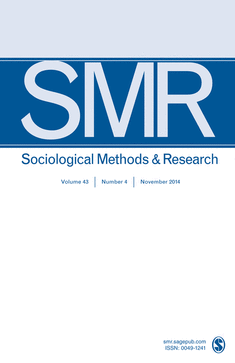A New Metric for Comparing Inequality of Educational Opportunity over Time and among Countries
 In a recent article published in Sociological Methods & Research (ranked 7 in Sociology, Thomson Reuters’ Journal Citation Reports 2013), Richard Breen, Anders Holm, and Kristian B. Karlson develop a new metric for comparative research on inequality of educational opportunity. They argue that the conventional measure of inequality of opportunity, the odds ratio, is less useful for comparative purposes. Drawing on their previous work in this area (see Karlson, Holm, & Breen 2012, Sociological Methodology), they demonstrate that the magnitude of the odds ratio depends on unobserved factors that researchers cannot control for. This means that the conventional measure of inequality of opportunity has very limited use in comparative research, because differences between countries or over time in odds ratios may reflect unobserved factors rather than genuine inequality of educational opportunity.
In a recent article published in Sociological Methods & Research (ranked 7 in Sociology, Thomson Reuters’ Journal Citation Reports 2013), Richard Breen, Anders Holm, and Kristian B. Karlson develop a new metric for comparative research on inequality of educational opportunity. They argue that the conventional measure of inequality of opportunity, the odds ratio, is less useful for comparative purposes. Drawing on their previous work in this area (see Karlson, Holm, & Breen 2012, Sociological Methodology), they demonstrate that the magnitude of the odds ratio depends on unobserved factors that researchers cannot control for. This means that the conventional measure of inequality of opportunity has very limited use in comparative research, because differences between countries or over time in odds ratios may reflect unobserved factors rather than genuine inequality of educational opportunity.
In response to this situation, Breen, Holm, and Karlson propose a new measure of inequality of educational opportunity that is well suited for comparative research. They show that the odds ratio can be decomposed into two parts. The first part is a correlation coefficient, which, by definition, is insensitive to the marginal distributions of the dependent and independent variables. The correlation, as a standardized measure, is particularly appropriate from the perspective of the study of inequality, because education can be seen as a positional good: What matters is a person’s position in the distribution rather than his or her absolute level of education. This correlation is therefore well suited for comparisons over time and/or among countries.
To demonstrate the use of the correlation metric, Breen, Holm, and Karlson re-analyze the results in Breen et al. (2009, American Journal of Sociology) for Germany, France, and the Netherlands. The Breen et al. study revealed declining inequalities in educational attainment using the odds ratio. In re-analyzing these findings, Breen, Holm, and Karlson find similar declines, although the downward trend is less pronounced when using the correlation metric. The re-analysis further indicates that Germany and France have similar levels of inequality of educational opportunity for those born 1955-1964. These levels are about twice of those found for the Netherlands, suggesting that the Netherlands is a more equal countries with respect to educational opportunities.
Breen, Richard, Anders Holm, & Kristian B. Karlson. 2014. "Correlations and Nonlinear Probability Models." Sociological Methods & Research 43(4):571-605.
